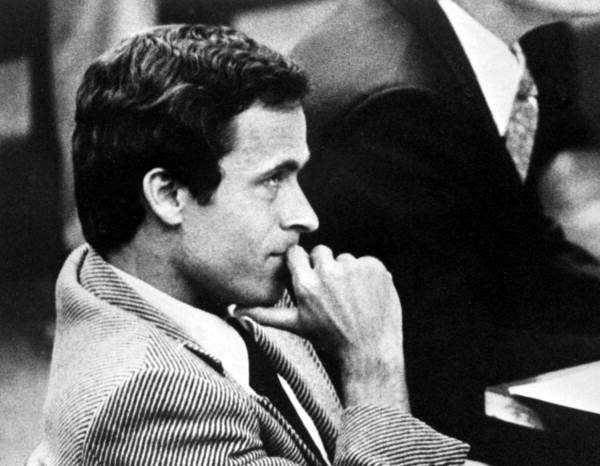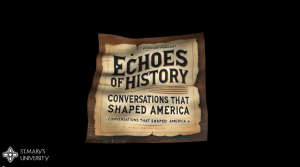Patrolman David Lee with the Pensacola Police Department was conducting his routine patrol in the early morning hours of February 15, 1978, when he just happened to cross paths with Theodore Bundy when he stopped him for a traffic violation. After a slight scuffle in which Bundy tried to flee, Lee managed to handcuff and secure him inside his vehicle. Bundy was quiet for most of the ride, and he knew his criminal adventures were finally over.1 After two successful escapes from jail, there was not going to be an opportunity for another.2
“I wish you had killed me.” He told Lee from the back of the car. “Would you kill me if I tried to run?”3
Before Bundy’s killing spree began, he attended the University of Washington, where he obtained a Bachelors degree and two years of law school.4 Based on the knowledge he gained in law school, Bundy insisted on being directly involved in conducting his defense in each of his trials, which is where his legal downward spiral began. During his sentencing trial, he attempted to connect with his jury and humanize himself by using carefully chosen Bible scripture. He wanted his largely southern jury to see him as comparable to Christ. He assured them that he was no Christ figure, but he urged them to remember how Christ had experienced an unjust trial and was subsequently executed on the basis of that unjust trial.5

As his final trial started to come to its inevitable end, Bundy did everything he could to postpone his execution date. He had multiple interviews with several different individuals; in each interview he would reveal something about himself that he would use to charm or manipulate his audience. One of these interviews led to an examination of evidence to see if Bundy was incompetent at the time of trial, which postponed his sentencing hearing. When a reporter questioned Bundy in an attempt to get him to admit to the thirty suspected murders, Bundy replied, “Put a zero after that.”6 Though we will never be certain on an exact number of murders that Bundy committed, it is without a doubt higher than the thirty that he officially confessed to.

Finally, on January 17, 1989, Bundy’s fourth and final death warrant was signed.7 It was at this point that he started confessing to multiple murders in an attempt to stave off his execution. After having been able to squeeze his way out of nearly every other situation he had managed to entangle himself in, he finally started to realize the inescapable reality, and the mask that he put on to keep the world from seeing him for what he really was, started to slip. He immediately began to look for his way out, trying to tug at the heartstrings of anyone who would listen. His last card to play was his interview with James Dobson.8

Dr. James Dobson is the founder of Focus on the Family, a Christian organization based in Colorado.9 At the time of Bundy’s interview, Dr. Dobson’s campaign was that pornography and violence were interrelated, and since Bundy was looking for a way to keep people talking about him, they were a match made in heaven. Throughout the interview, Dr. Dobson and Bundy were able to craft an entirely new story that thousands of people would believe. Bundy was able to portray himself as being corrupted by pornography from a young age, that pornography is what caused his violent behavior. Dr. Dobson had his perfect poster child. There was a question in the middle of the interview in which Dr. Dobson questioned Bundy about the murder of Kimberly Leach, and Bundy stated that he couldn’t talk about it.
“One of the final murders that you committed, … little Kimberly Leach, 12 years of age. I think the public outcry was greater there because an innocent child was taken from a playground. What did you feel after that? Was there normal emotions three days later? Where were you, Ted?” asked Dr. Dobson.

“I can’t really talk about that,” said Ted Bundy.
“That’s too painful,” Dr. Dobson interjected.
“I would like to be able to convey what that experience is like, but I can’t be able to talk about it,” said Ted Bundy.
“OK,” said Dr. Dobson.10
At this point, the camera caught Bundy’s quick glance at Dr. Dobson, clearly reading and carefully considering his next words. It was at this moment that Bundy’s eyes looked up at Dr. Dobson and in those few seconds his mask slipped, revealing the heartless murderer making his cold calculations on what his next move would be. The facade of the repented sinner that was corrupted by pornography that Bundy had been attempting to convey to us crumbled to reveal the truth, a psychopathic killer.

Throughout the entire forty-minute interview, he carefully chose his words in order to most effectively charm whatever audience he could manage to get his words to. This interview is where we get one of his most infamous quotes:
“And people need to recognize it’s not some kind of . . . those of us who are or who have been so much influenced by violence in the media, in particular, pornographic violence, are not some kind of inherent monsters. We are your sons and we are your husbands, and we grew up in regular families. And pornography can reach out and snatch a kid out of any house today. It snatched me out of my home 20, 30 years ago, and as dedicated as my parents were, and they were diligent in protecting their children and as good a Christian home as we had, and we had a wonderful Christian home, there is no protection against the kind of influences that are loose in society that tolerates. . . .”11
Ann Rule, a former co-worker and friend of Bundy, immediately recognized the interview for what it was: a final attempt to save himself, to blame someone other than himself for what he did.
“Dr. Dobson wanted someone to testify against booze and pornography, and Ted wanted to leave us all talking about him. He wanted to blame someone else for his crimes, and by saying it was us who left all those bad magazines on the racks, he became innocent in his own mind.”12

On January 24, 1989, Theodore Bundy died in the electric chair. As the white flag signaling his death was waved from the prison yard, cheers could be heard from the crowd gathered across the street. The chant “Burn, Bundy, burn!” paired with the banging of frying pans rang out in the early morning air.13
Dr. Dobson did not release the interview until after Bundy was executed. In a way, both of these men achieved their goal. Dr. Dobson had a real-life example of the dangers that pornography can have on a perfectly “normal human.” Bundy was able to keep people talking about him, his horrific murders, and what possible factors led him to commit those crimes. Several women viewed Dr. Dobson’s interview with Bundy and saw the compassion and remorse that Bundy was attempting to portray, while others were able to see through his last lie.14 Bundy went down in history for being one of the most cold blooded killers who will continue to be discussed for generations.
Though many people still protest Bundy’s execution, there is one thing we can all agree on: “He had an easier death than any of his victims.” 13
- George R. Dekle, The Last Murder: The Investigation, Prosecution, and Execution of Ted Bundy: The Investigation, Prosecution, and Execution of Ted Bundy (Santa Barbara, California: Praeger, 2011), 16. ↵
- Kristen Iversen, “When Death Came to Golden,” American Scholar 87, no. 2. (2018): 82. ↵
- George R. Dekle, The Last Murder: The Investigation, Prosecution, and Execution of Ted Bundy: The Investigation, Prosecution, and Execution of Ted Bundy (Santa Barbara, California: Praeger, 2011), 16. ↵
- George R. Dekle, The Last Murder: The Investigation, Prosecution, and Execution of Ted Bundy: The Investigation, Prosecution, and Execution of Ted Bundy (Santa Barbara, California: Praeger, 2011), 22. ↵
- George R. Dekle, The Last Murder: The Investigation, Prosecution, and Execution of Ted Bundy: The Investigation, Prosecution, and Execution of Ted Bundy (Santa Barbara, California: Praeger, 2011), 212. ↵
- George R. Dekle, The Last Murder: The Investigation, Prosecution, and Execution of Ted Bundy: The Investigation, Prosecution, and Execution of Ted Bundy (Santa Barbara, California: Praeger, 2011), 219. ↵
- George R. Dekle, The Last Murder: The Investigation, Prosecution, and Execution of Ted Bundy: The Investigation, Prosecution, and Execution of Ted Bundy (Santa Barbara, California: Praeger, 2011), 218. ↵
- Kristen Iversen, “When Death Came to Golden,” American Scholar 87, no. 2. (2018): 88. ↵
- Dr. James Dobson Steps Down as Focus on the Family Chairman (Colorado Springs, Colorado: Focus on the Family. February 27, 2009), https://www.focusonthefamily.com/about/newsroom/news-releases/20090227-dobson-steps-down-as-focus-chairman. ↵
- The Associated Press,”Bundy’s Last Interview; ‘I take full responsibility,'” The Palm Beach Post, January 29, 1989, 7-8. ↵
- The Associated Press,”Bundy’s Last Interview; ‘I take full responsibility,'” The Palm Beach Post, January 29, 1989, 7-8. ↵
- LAST BUNDY INTERVIEW CALLED `CON GAME,’ Salt Lake City, Utah: Deseret News. September 12, 1989. ↵
- Barry Bearak, “Bundy Electrocuted After Night of Weeping, Praying : 500 Cheer Death of Murderer,” Los Angeles Times, 24 Jan. 1989. ↵
- LAST BUNDY INTERVIEW CALLED `CON GAME,’ Salt Lake City, Utah: Deseret News. September 12, 1989. ↵
- Barry Bearak, “Bundy Electrocuted After Night of Weeping, Praying : 500 Cheer Death of Murderer,” Los Angeles Times, 24 Jan. 1989. ↵



125 comments
Joshua Garza
Ted Bundy is in the history books forever. His mind was clearly twisted and demented in a sense that he got off on killing people in extremely gruesome ways. Nobody can really tell what goes on in the mind of someone like that. I had not paid much attention to who Ted Bundy was before the Netflix series on him. Its a truly crazy story that took place in the common world we live in.`
Rebeca Escobar
I’ve been hearing a lot about Ted Bundy lately, mainly because Netflix has launched a documentary revolving around him. Bundy was a sick and twisted individual, and I wish we remembered the victims and families he destroyed more than we remember him. The last quote of this article is 100% true, Bundy definitely died a less painful death than his victims. I will never comprehend the mind of someone who can kill so many people, and I wish the media and justice system didn’t do so much to try and justify them.
Maria Garcia
This article had me intrigued from start to finish! This side of the Ted Bundy case is something that I haven’t fully heard about yet, but this was an interesting perspective to take on it. To read that he continuously tried to make his name bigger than what it was is crazy because it’s like, how could someone want to do such bad things in order to get known for so many bad things? What all truly goes through one’s head to make them want to harm multiple people, more so a twelve year old child? It all blows my mind because it’s scary that even the most “normal” people can be hiding the deepest secrets.
Fatima Navarro
Ted Bundy has been a hot subject in recent days after Netflix’s showing. Sometimes the people who seem the most innocent and are the most intelligent, are the ones who are the most twisted. Ted Bundy harmed many women, and what I don’t understand is why the jury system allows an examination to see if they are “sane” or if they have any other mental issue. Whatever it is, they deserve to pay for what they did, regardless.
Nadia Carrasco
The case of Ted Bundy is so interesting to me, because it is unreal to think that an individual would be capable of killing so many women for such a long period of time before getting caught. Recently I have been watching the documentary about how this all happened and it really interested me. He knew how to get people to like him and see his side of things and sometimes even make himself seem innocent. He manipulated anyone who would listen to save himself from a punishment that was truly inevitable. This case could go on forever with this type of man, and he took advantage of that.
Paola Arellano
I am very conflicted with whether or not I agree with the death penalty. In my head, it is the easy way out as they do not suffer. The author made a great point in the end of the article as they mentioned the fact that the killer had an easier death than that of all his killings. That is the chilling truth and in a way, these murderers get out of life everything that they ever want. They kill, which they believe is their purpose in this world, they get away with it fora while even bragging about it without people knowing. They live a perfectly normal life and then kill innocent people who have done them no harm but yet they also get the exact attention that they desire and at the end of it all they just get caught, get even more attention and die quickly. Now that is truly disappointing.
Antonio Coffee
Reading this article was shocking. I only recently learned of who Ted Bundy was and everything that he did. What really shocks me is that someone saw this as an opportunity to push their agenda to prove something. The fact that Dobson used the crimes committed by Bundy as a tool to push an agenda is beyond me. It is obvious that this man had issues but it seems hard to blame them on one thing in particular. Dobson had a very clear bias and Bundy had a very clear reason to go along with it. This article really shows how people are willing to use confirmation bias and will do everything possible to escape blame.
Diamond Davidson
I want to start off by saying that this article about Ted Bundy is amazing and well written and I just love how the pictures flow with the reading. I knew of Ted Bundy and what he did, but I never knew it went to college and studied law, also on top of that he was his own lawyer in court to show the jury he wasn’t guilty. He must of really had all that planned out which is extremely smart for a criminal.
Alicia Guzman
Ted Bundy was a serial killer. He was skilled in manipulation as a brutal and horrible murderer and rapist. Ted Bundy has recently exploded in popularity in pop culture. I am not a fan. What I like about this article is that does not over glorify him or attempt to make him seem humane in any way will Bundy tried to do this himself, the writer was not swayed.
Sarah Uhlig
This Ted Bundy character seemed to be really heartless in how he can just plan and kill people without feeling regretful or fearful of the result. It is shocking to read about this guy because I never really understood who he was or how many people he murdered, but in conclusion of reading this well developed article, I learned how cold hearted this man was. It is unfortunate how people can murder others like it is a sport.